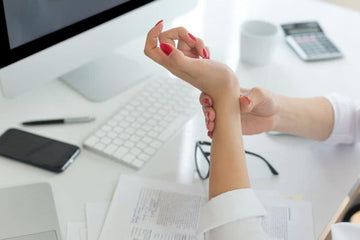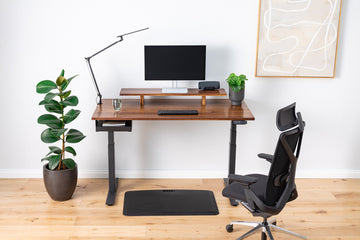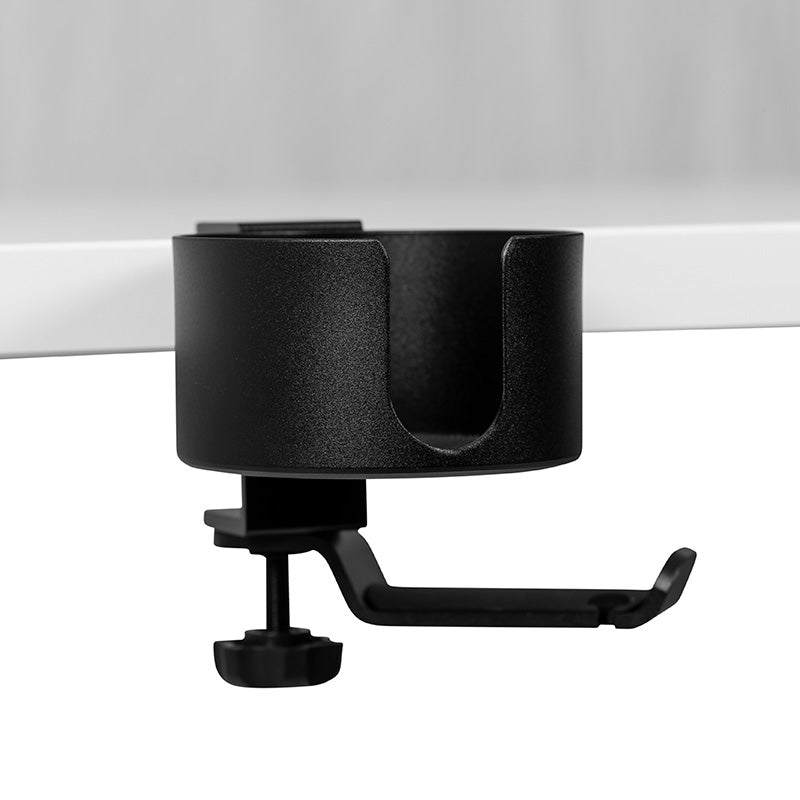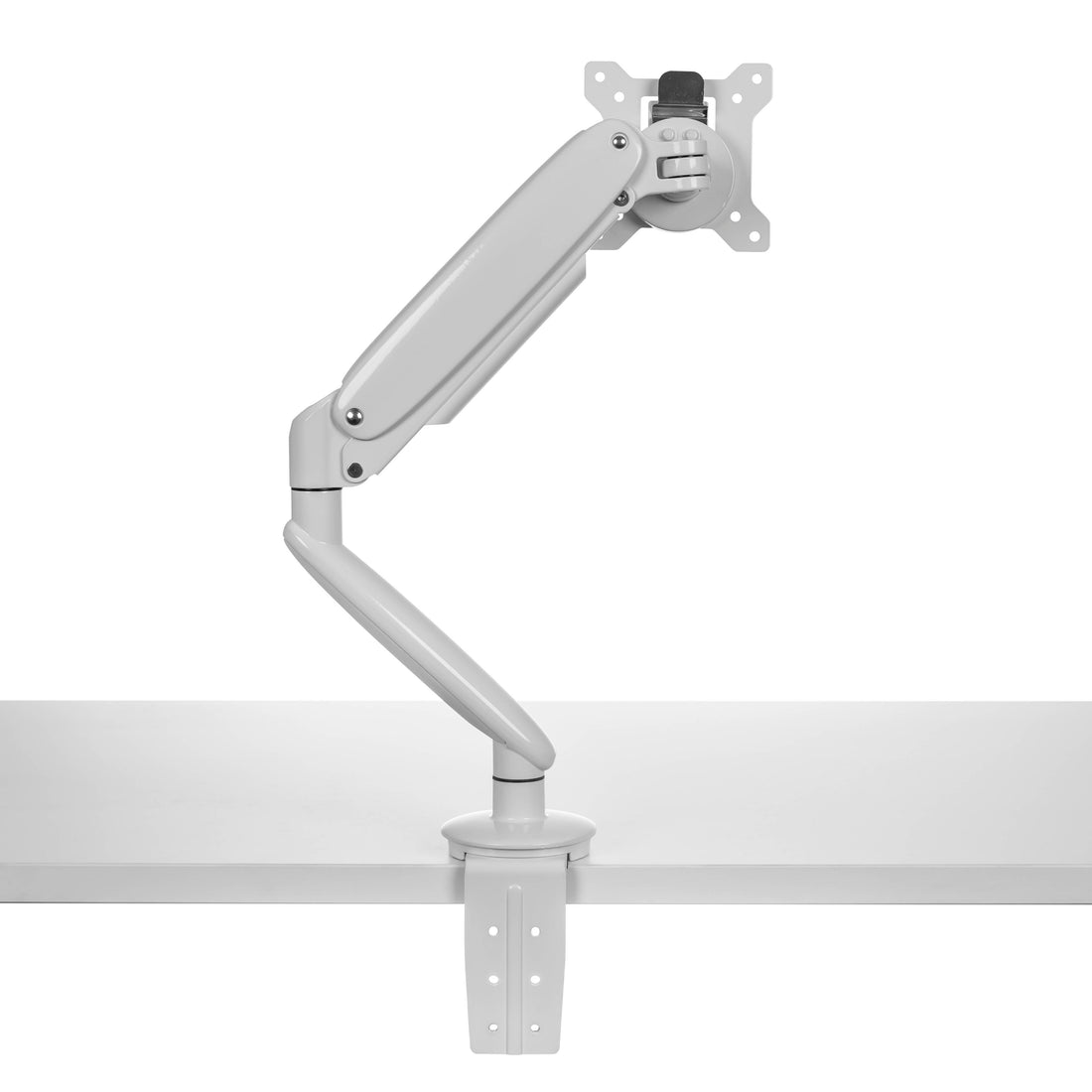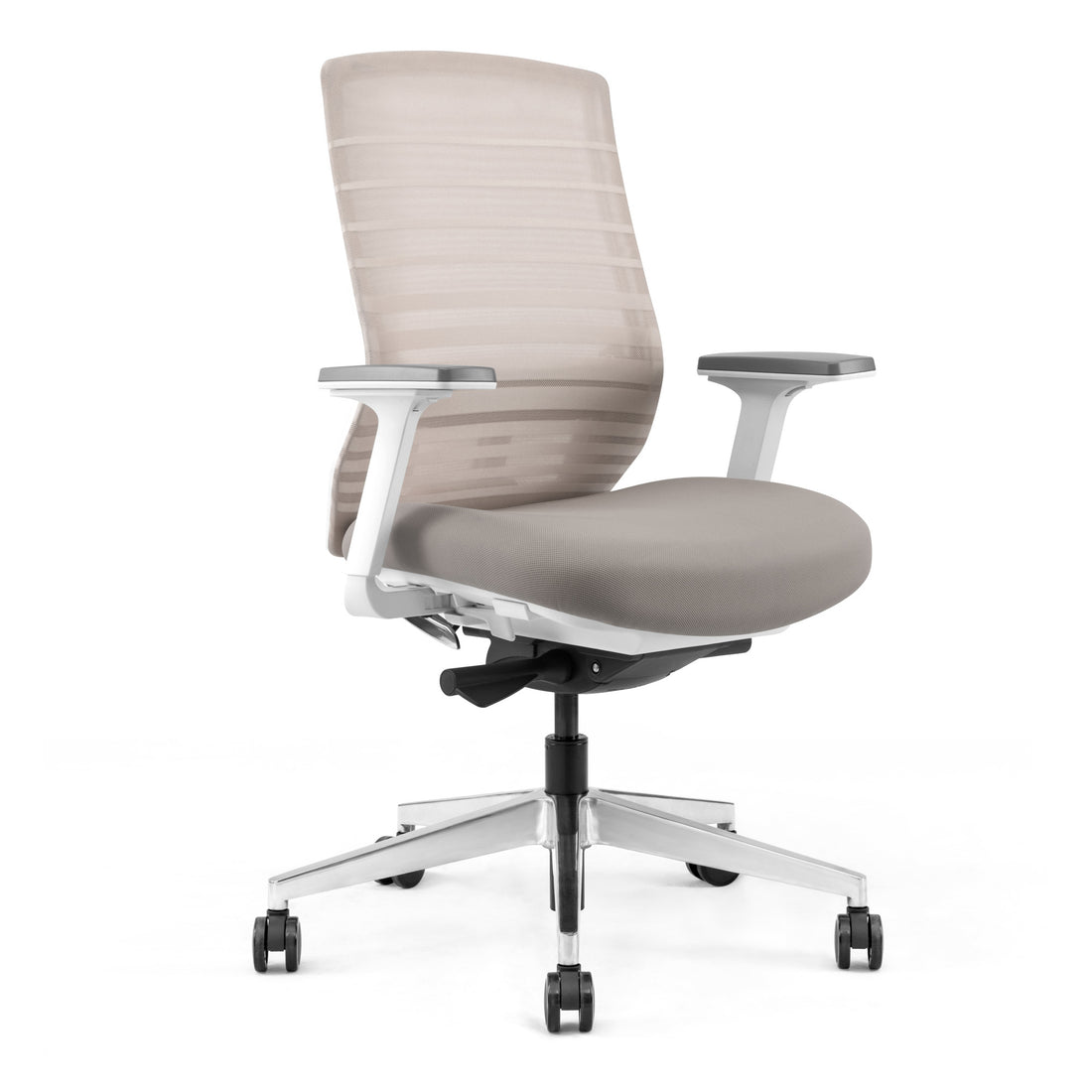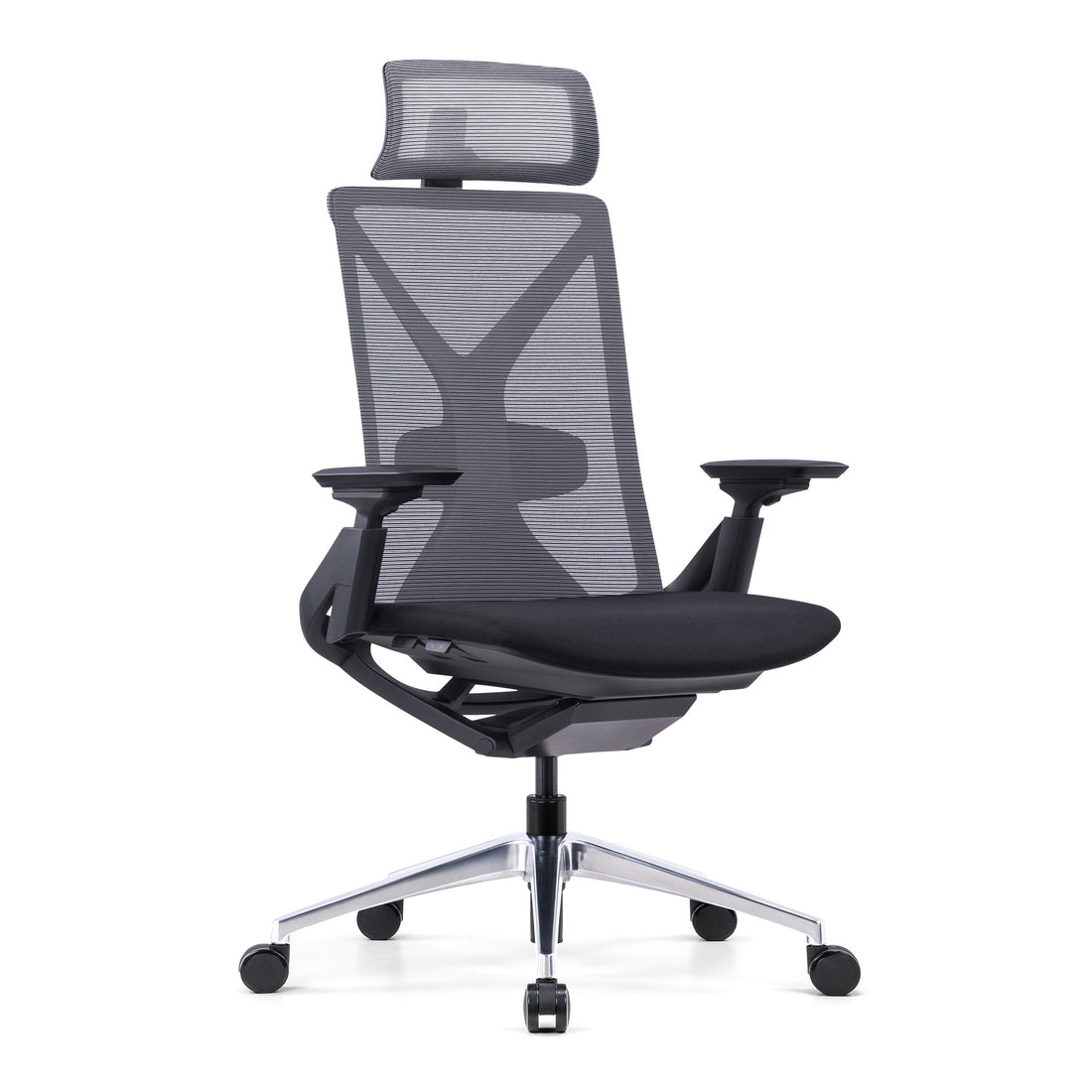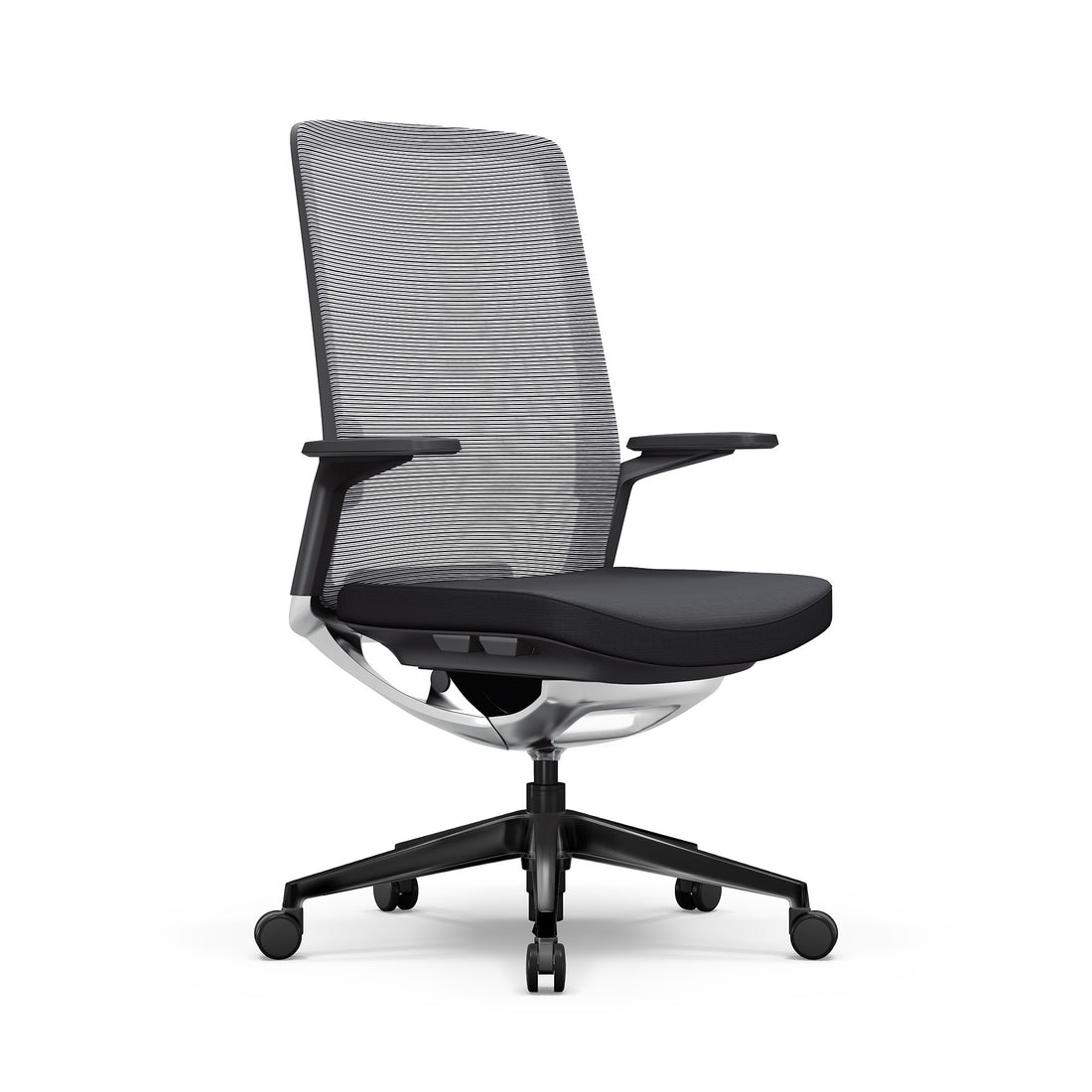If your wrists have been acting up there could be a few reasons for it. Working long hours sitting or standing behind a desk is one of them.
There are so many ligaments, bones, joints, and tendons in your hands that injuring them when they’re overworked is surprisingly easy.
Whether it’s chronic or a one-time flare up, wrist pain is something most of us will deal with at some point. We have a few techniques that can ease the pain and hopefully correct this problem.
Standing Desks and Wrist Pain
How Are The Wrist Injuries Caused?
When at a standing desk, a common cause of wrist pain is typing on the computer. This happens because the motion is repetitive and when typing for long hours the tendons can become inflamed.
Also, when you stand incorrectly, like slouching or leaning over your desk, this poor posture contributes to wrist pain. This happens because it makes the typing motion awkward.

What To Do To Avoid Wrist Pain At A Standing Desk
Straight Airborne Wrists
Try to keep your elbows close to your body and near to a 90-degree angle. This will allow for your wrists to be straight and hover freely above the keyboard.
To achieve this your desk needs to be the correct height.
Don’t adjust your body to the desk, you should adjust the desk to your body. This is easy if you buy a height-adjustable desk or an electric standing desk. Adjust your desk to the same height as your elbows. This will give you the right angle required for good posture.
Your keyboard must be positioned properly when standing at your desk. It should be centered in front of you with your mouse right next to it and your monitor at eye level. Your phone should be at arm’s length as well unless, of course, you have a headphone with a mouthpiece which is even better.
Bad positioning of your computer monitors or laptop screens when working long hours can lead to chronic conditions. This can create issues with your arms and typing position which will impact your productivity at work.
If you work from a laptop, use a laptop stand to raise it at an angle. Also, use a second keyboard and mouse. You don’t want your wrists bending upwards at your keyboard as this position will be likely to result in painful wrists.
Take a Break
The calories burned at a standing desk differ from person to person. This is because it depends on your height and weight and size. Even though you are burning calories, you’ll still need to move every few minutes.
Shift your weight and move from left, to the center, to the right leg when necessary. Swaying from side to side will not only help prevent stiffness but will also help prevent heel pain at your standing desk.
Stretch your wrists before you first start typing and take a break for a few minutes every hour. When you do, wrist exercises will help you keep those wrists in shape and avoid or ease wrist pain.
Try these when standing at your desk:
Wrist Exercises
- Make fists and squeeze tight, then spread fingers widely apart.
- Extend your arm in front of you with your palm up and pull your fingers slightly back using your other hand. Do this for both wrists.
- Hold your hands together in prayer and gently push your fingers to the left and hold then push right and hold.
- Bend your wrist, pointing your hand down towards the floor.
Hold each position for at least 15 seconds at a time and repeat if necessary. Stretching and moving your wrists in different positions can make an incredible difference.

These wrist exercises increase flexibility and lower the risk of injury. Staying hydrated by drinking water also provides plenty of benefits. Better joint health is one of them and aside from the great health benefit, it’ll get you moving to use the bathroom.
Keeping your hands warm is advisable too so that the blood flow is consistent, especially if your standing desk is in a room that doesn’t get much sun.
Wrist Splints
A wrist brace looks like a fingerless glove and is designed to ease wrist pain. Wearing a wrist splint reduces pressure on the median nerve and allows the wrist to rest. When you put the brace on, it stabilizes your wrist.
What Injuries Can Develop?
If your wrist pain is present when you’re not moving your hand or it just never goes away, always lingering in the background, you should go and see a doctor.
Wrist injury must be taken seriously because you may be at risk of developing tendonitis in the wrist or carpal tunnel syndrome.
A wrist injury can also cause nerve damage; your hand may become stiff or feel numb with tingling pins and needles. This feeling is consistent with carpal tunnel syndrome.
Arthritis develops over a long period too and is aggravated by repetitive movements.
Many injuries can develop, so it’s best to take precautions and do what you can to avoid injuries.
When To Go To A Doctor
If your pain persists, make an appointment to see your doctor. If the injury requires further attention, your doctor will refer you to an orthopaedist. This is a medical doctor trained to treat injuries and conditions of the joints, tendons, and ligaments.
They will examine your wrist and tell you the best treatment. So even if you're not experiencing pain now, it's a good idea to try these strategies to keep your wrists healthy.
Conclusion
Regardless of the source, discomfort in the workplace can reduce your performance. But if you're using a sit-stand work desk, you’ve already made a decision that can improve your health.
So, make sure you have the correct desk and that your computer is in a position that is best suited for your height and comfortable with everything being in reach. This way you won't develop any long-term conditions of the wrist.
UpDownDesk PRO Series desks are an excellent choice of height adjustable desks that can help you get things at exactly the right height and help avoid wrist pain.
Did you find our blog helpful? Then consider checking:
- Problems With Standing Desk
- Standing Desk Vs Ergonomic Chair
- Standing Desk Vs Exercise Ball
- How To Lower Standing Desk
- Standing Desk Won't Go Up
- Types Of Standing Desks
- Standing Desk Balance Board Vs Mat
- Best Anti Fatigue Mat For Standing Desk
- Best Budget Standing Desk
- How To Make A Standing Desk Look Better

